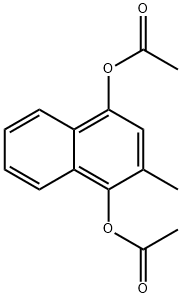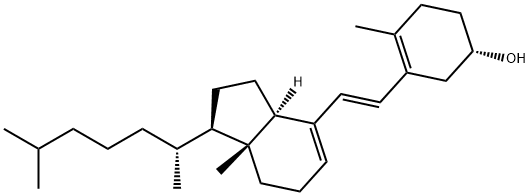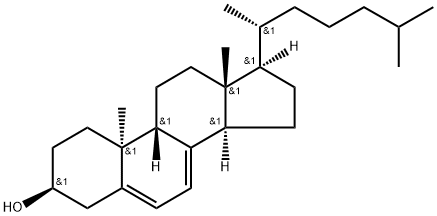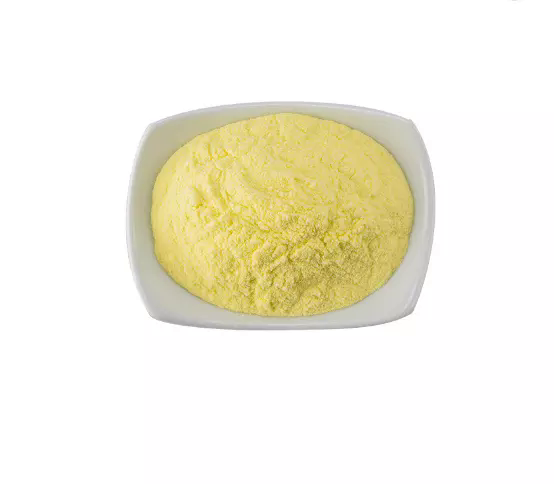7-Dehydrocholesterol
Synonym(s):(−)-7-Dehydrocholesterol;3β-Hydroxy-5,7-cholestadiene;5,7-Cholestadien-3β-ol;7-dehydrocholesterin; Provitamin D3; 110807;Provitamin D3
- CAS NO.:434-16-2
- Empirical Formula: C27H44O
- Molecular Weight: 384.64
- MDL number: MFCD00003624
- EINECS: 207-100-5
- SAFETY DATA SHEET (SDS)
- Update Date: 2025-01-27 09:38:02

What is 7-Dehydrocholesterol?
Chemical properties
white to off-white fine crystalline powder. It is easy to oxidize when exposed to air.
The Uses of 7-Dehydrocholesterol
7-Dehydrocholesterol is a vitamin D3 precursor, which is a sterol found in animals. Vitamin D3 is produced by the action of sunlight or ultraviolet irradiation from the precursor, 7-dehydrocholesterol (7-DC), that is synthesized in the skin of animals and humans.
In most tissues of the body, 7-dehydrocholesterol is the immediate precursor of cholesterol. It is reduced to cholesterol by the enzyme 3β-hydroxysterol-Δ7-reductase (DHCR7) in the last step of cholesterol biosynthesis. 7-DHC accumulates in Smith-Lemli-Opitz syndrome (SLOS), a disorder characterized by a mutation in the DHCR7 gene and decreased cholesterol levels in bodily tissues and fluids, as well as microcephaly, intellectual disability, and distinctive dysmorphic features. It is highly susceptible to free radical oxidation, giving rise to several oxysterols that may be involved in the pathogenesis of SLOS. 7-DHC levels are increased in brain, liver, and serum in a rat model of SLOS induced by the DHCR7 inhibitor AY 9944. 7-DHC is a provitamin that is converted to vitamin D3 by ultraviolet-B (UVB) light in a human skin equivalent system and in isolated human skin samples.
What are the applications of Application
7-Dehydrocholesterol is a down-regulator of cholesterol synthesis
Definition
ChEBI: 7-Dehydrocholesterol is a 3β-sterol, a cholestanoid, a Delta(5),Delta(7)-sterol and a 3beta-hydroxy-Delta(5)-steroid. It has a role as a human metabolite and a mouse metabolite.
General Description
7-Dehydrocholesterol, a 5,7-conjugated diene sterol is a biosynthetic precursor of cholesterol. It helps in the production of vitamin D3 when exposed to ultraviolet B (UVB) radiation. It has been used as an internal standard to determine sterols. 7-dehydrocholesterol is also used in the diagnosis of Smith-Lemli-Opitz syndrome. Blood and tissue of infants with Smith- Lemli-Opitz (SLO) syndrome contain reduced amounts of cholesterol and greatly increased concentrations of 7-dehydrocholesterol and of its isomer 8-dehydrocholesterol.
Biochem/physiol Actions
Down-regulates cholesterol biosynthesis in cultured Smith-Lemi-Opitz syndrome skin fibroblasts.
Properties of 7-Dehydrocholesterol
| Melting point: | 148-152 °C(lit.) |
| Boiling point: | 451.27°C (rough estimate) |
| alpha | -116 º (C=1, CHCL3) |
| Density | 0.9717 (rough estimate) |
| refractive index | 1.5100 (estimate) |
| storage temp. | -20°C |
| solubility | Chloroform (Sparingly), DMSO (Slightly, Heated, Sonicated), Ethyl Acetate (Sligh |
| pka | 14.91±0.70(Predicted) |
| form | Solid |
| color | White to Yellow |
| optical activity | [α]20/D -115±8°, c = 1% in chloroform |
| Water Solubility | Insoluble |
| Merck | 13,2887 |
| BRN | 2224615 |
| Stability: | Light Sensitive |
| CAS DataBase Reference | 434-16-2(CAS DataBase Reference) |
| NIST Chemistry Reference | Cholesta-5,7-dien-3-ol, (3«beta»)-(434-16-2) |
| EPA Substance Registry System | Cholesta-5,7-dien-3-ol, (3.beta.)- (434-16-2) |
Safety information for 7-Dehydrocholesterol
| Signal word | Warning |
| Pictogram(s) |
 Exclamation Mark Irritant GHS07 |
| GHS Hazard Statements |
H302:Acute toxicity,oral H315:Skin corrosion/irritation H319:Serious eye damage/eye irritation H335:Specific target organ toxicity, single exposure;Respiratory tract irritation |
| Precautionary Statement Codes |
P261:Avoid breathing dust/fume/gas/mist/vapours/spray. P280:Wear protective gloves/protective clothing/eye protection/face protection. P301+P312:IF SWALLOWED: call a POISON CENTER or doctor/physician IF you feel unwell. P302+P352:IF ON SKIN: wash with plenty of soap and water. P305+P351+P338:IF IN EYES: Rinse cautiously with water for several minutes. Remove contact lenses, if present and easy to do. Continuerinsing. |
Computed Descriptors for 7-Dehydrocholesterol
| InChIKey | UCTLRSWJYQTBFZ-DDPQNLDTSA-N |
7-Dehydrocholesterol manufacturer
New Products
3-Iodophenylacetic acid 3-Pyridineacetonitrile, α-hydroxy- 2-Propanamine, 1-chloro-, hydrochloride (9CI) 3-(hexyloxy)-4-(pyridin-3-yl)-1,2,5-thiadiazole 2-Hexyn-1-ol Dibenzo-18-crown-6 Nickel(II) perchlorate hexahydrate, 98% 4-Bromophenylacetonitrile, 95% 3-Bromo-4-fluoroaniline, 97% Sodium tetraborate decahydrate, 98% Palladium(II) acetate, trimer, Pd 99% 4-Bromo-2-chlorotoluene, 97% N N Dimethylformamide Dimethyl Acetal (Dmf Dma) 2,3-Dichloro Benzoyl Cyanide [Side Chain] Bis(2-Chloroethyl) Amine Hydrochloride L-Glutamic Acid Diethyl Ester Hydrochloride 5-(Difluoromethoxy)-2-Mercaptobenzimidazole 1-Ethyl-3-(3-Dimethylaminopropyl)-Carbodiimide Hydrochloride [EDC Hcl] 1,4-Napthoquinone Bromoiodomethane Sodium Bicarbonate Methylene Dichloride (MDC) Ethyl Acetate Indole-3-Carbinol (I3C)Related products of tetrahydrofuran








You may like
-
 7-Dehydrocholesterol, ≥95% (HPLC) CAS 434-16-2View Details
7-Dehydrocholesterol, ≥95% (HPLC) CAS 434-16-2View Details
434-16-2 -
 CHOLESTA-5,7-DIEN-3-BETA-OL CASView Details
CHOLESTA-5,7-DIEN-3-BETA-OL CASView Details -
 7-dehydrocholesterol CAS 434-16-2View Details
7-dehydrocholesterol CAS 434-16-2View Details
434-16-2 -
 7-Dehydrocholesterol CAS 434-16-2View Details
7-Dehydrocholesterol CAS 434-16-2View Details
434-16-2 -
 17-(1,5-DIMETHYL-HEXYL)-10,13-DIMETHYL-DODECAHYDRO-CYCLOPENTA(A)PHENANTHREN-3-OL CASView Details
17-(1,5-DIMETHYL-HEXYL)-10,13-DIMETHYL-DODECAHYDRO-CYCLOPENTA(A)PHENANTHREN-3-OL CASView Details -
 7-Dehydrocholesterol 98%View Details
7-Dehydrocholesterol 98%View Details -
 Cyclohexane, (2-propynyloxy)- 67967-07-1 98+View Details
Cyclohexane, (2-propynyloxy)- 67967-07-1 98+View Details
67967-07-1 -
 132945-75-6 (S)-1-Boc-3-methanesulfonyloxy-pyrrolidine 98+View Details
132945-75-6 (S)-1-Boc-3-methanesulfonyloxy-pyrrolidine 98+View Details
132945-75-6
